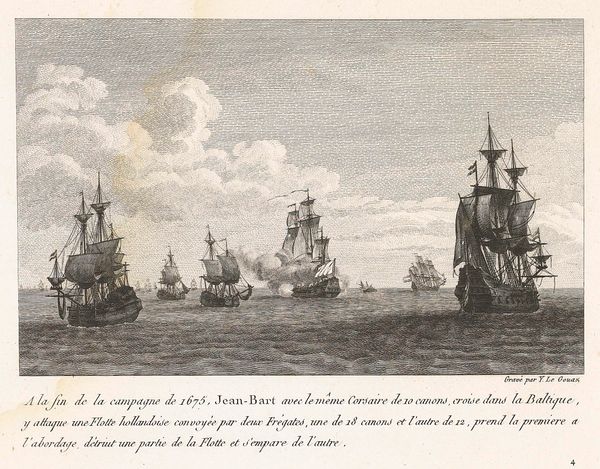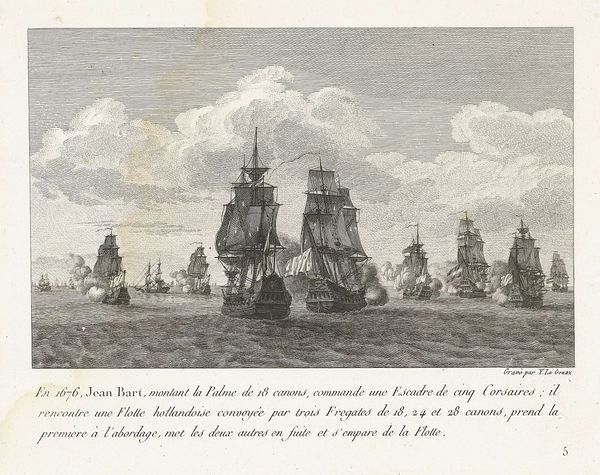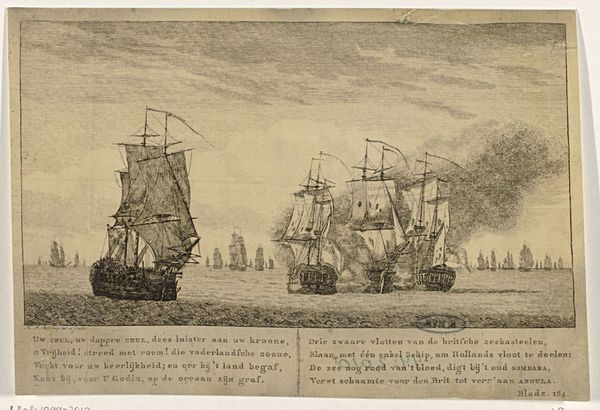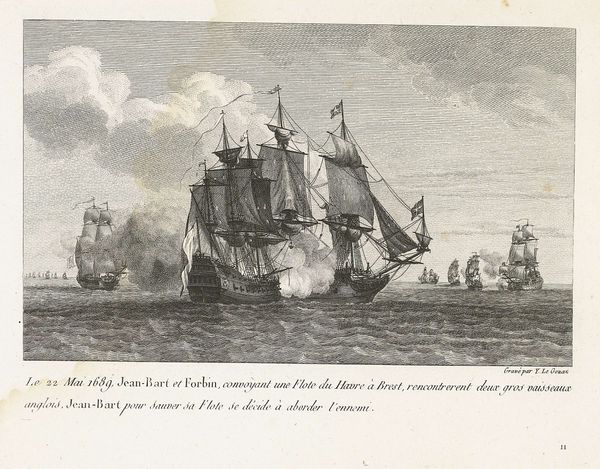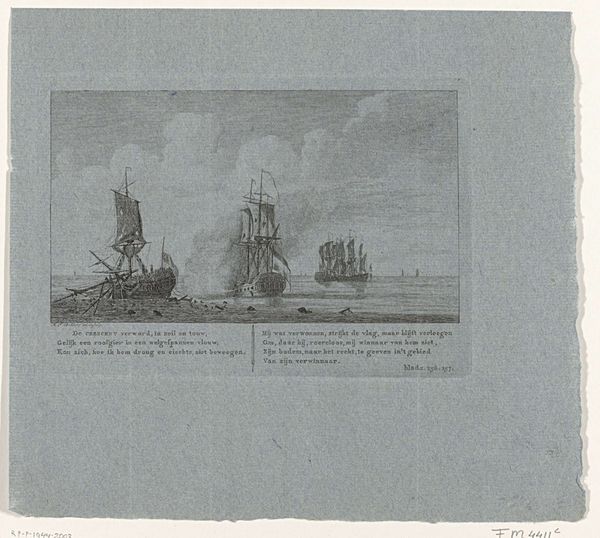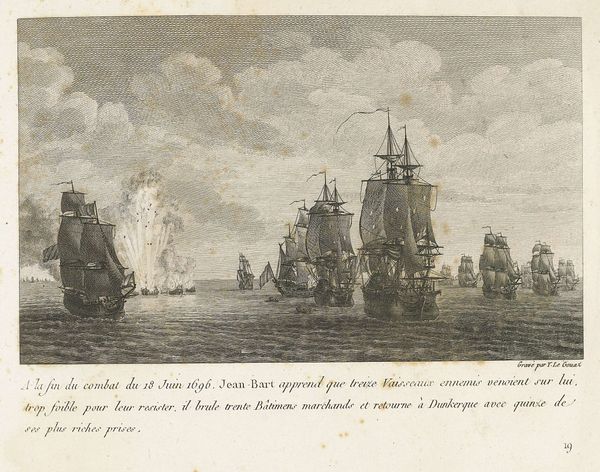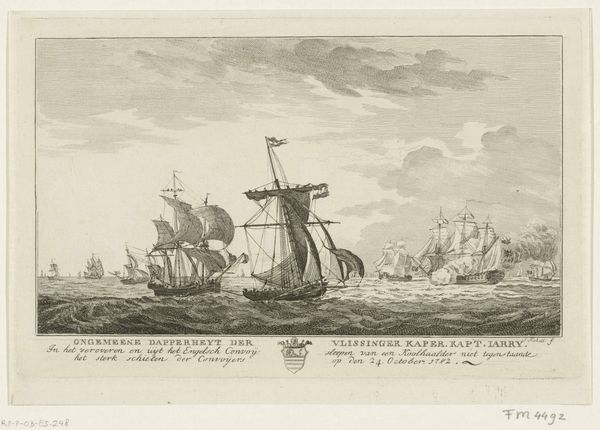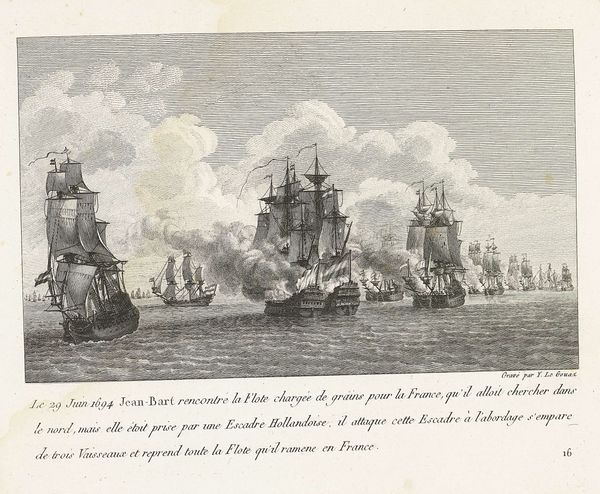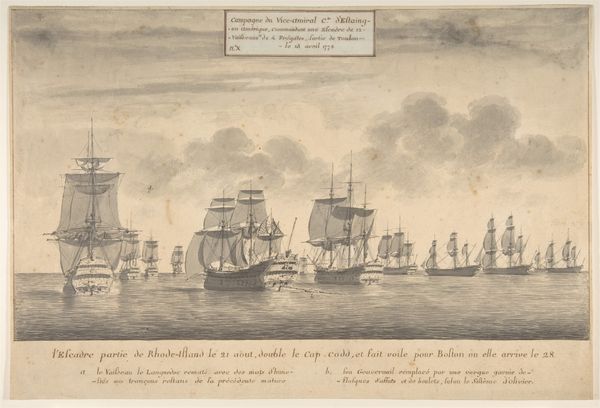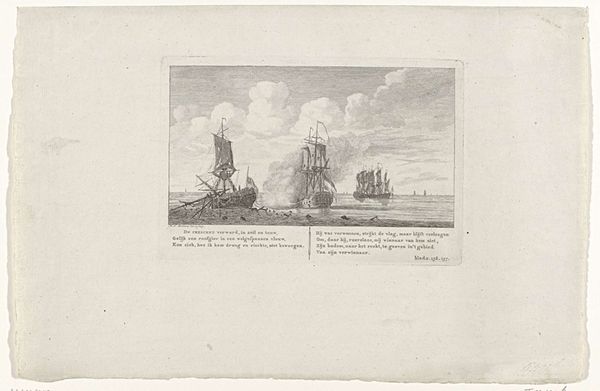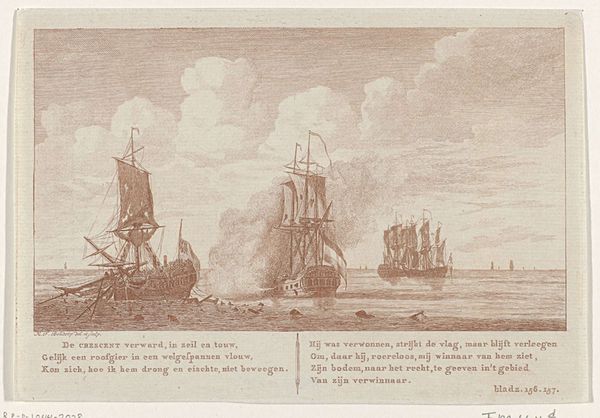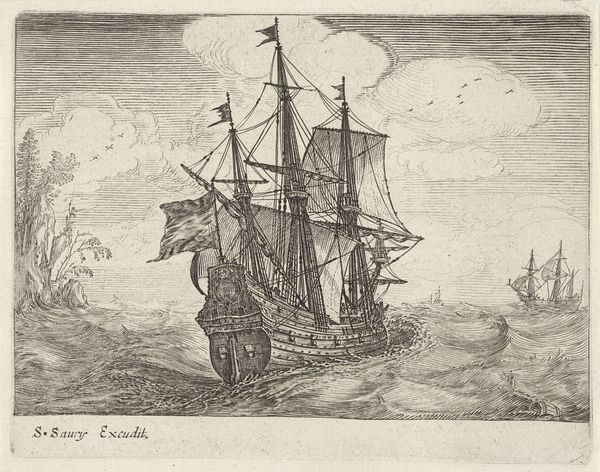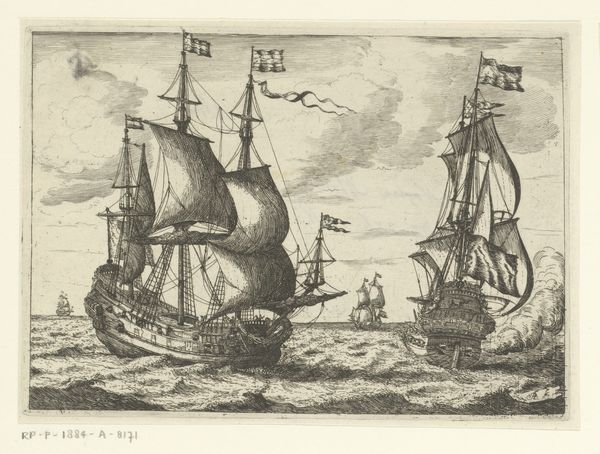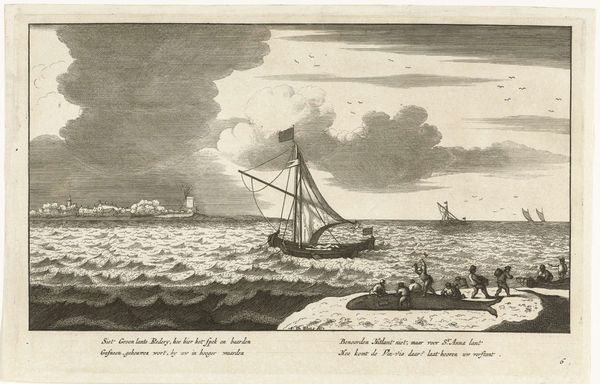
Dimensions: height 180 mm, width 220 mm
Copyright: Rijks Museum: Open Domain
Curator: Before us we have "Einde van het gevecht van Jan Bart op 22 mei, 1689" by Yves Marie Le Gouaz, created in 1806. It's an engraving, currently held in the Rijksmuseum. Quite a dramatic scene! Editor: Indeed. Even though it's black and white, the rendering gives the whole thing such a strong feeling of a solemn aftermath. The victorious ships silhouetted against a sky filled with swirling clouds give me a palpable sense of both triumph and perhaps…loss? Curator: That's astute. The event depicted is the conclusion of a battle where the French naval hero, Jan Bart, achieved victory. This print was likely produced much later to fuel national pride during a time when national identities were being strongly defined, following periods of revolution and conflict across Europe. Editor: I am curious about the prominence given to the ships themselves. To my eyes they aren't merely vessels but function as potent symbols. They stand for the power of the state, yes, but also perhaps a sense of ambition and reach…The sea here serves as both pathway and boundary, wouldn't you say? Curator: Absolutely. Sea battles and naval power played a huge role in solidifying Dutch power in the 17th century and onwards, so it's fascinating how artists like Le Gouaz reach back into history to reinvigorate those potent narratives. It reminds audiences of past glories, implicitly asking them to identify with that heritage. Editor: And even now, looking at this, I still respond to it on an emotional level, despite knowing it's part of a larger political agenda. The way the light plays on the sails and the receding ships in the distance – it still carries the weight of those sailors’ experiences. That's something history and cultural context can only deepen, not diminish. Curator: Agreed. It’s an example of how images work powerfully, by intertwining factual historical events with emotional resonance. They create a complex and lasting understanding of the past, not just an accounting of names and dates. Editor: Indeed, examining such symbols allows us to understand how history remembers and represents, shaping national and personal identity to this very day.
Comments
No comments
Be the first to comment and join the conversation on the ultimate creative platform.
